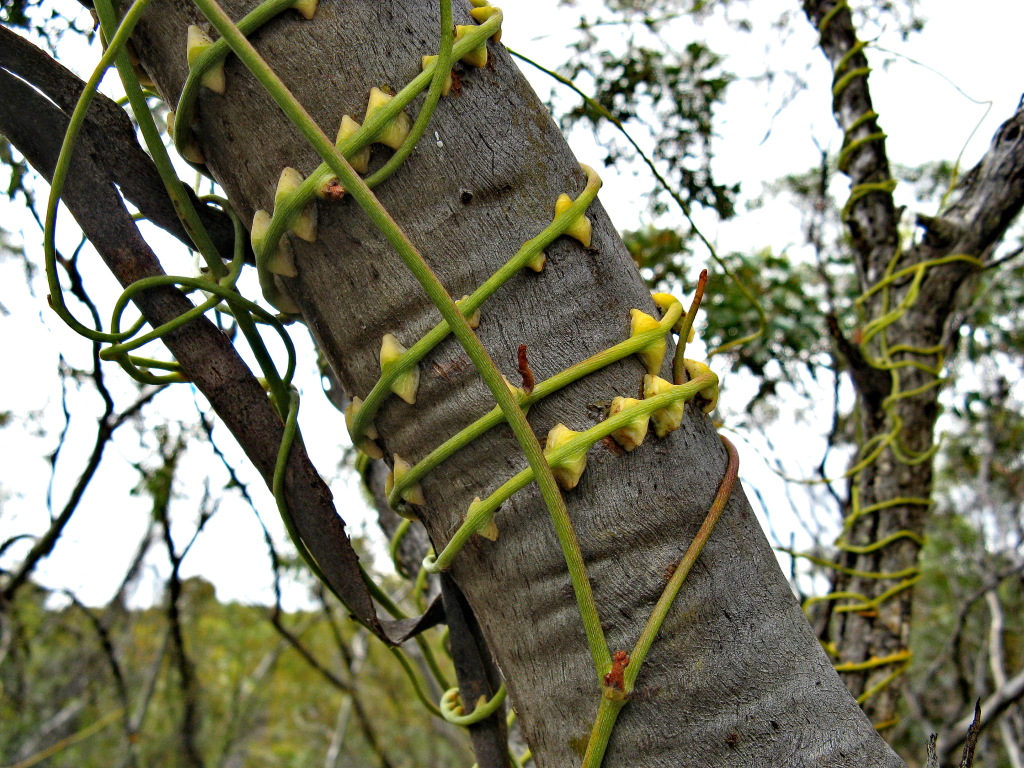Cassytha melantha
R.Br. Coarse Dodder-laurelRobust twiner, younger parts pubescent; stems terete, 1–4 mm thick, striate, glabrescent, green to reddish-green; haustoria 2–5 mm long. Leaves triangular-ovate, c. 1 mm long, c. 0.8 mm wide, red-pubescent. Inflorescence a single, or rarely clustered, 2–13-flowered spike; peduncle usually 20–30 mm long. Flowers ovoid, 2–3 mm long, 1.3–2 mm diam., subsessile to sessile; sepals triangular, 1–1.3 mm long, covered with short white, red and black hairs; petals ovate, 1.9–2.7 mm long, c. 1.5 mm wide, covered with short, retrorse, appressed black hairs. Fruit globular, 10–15 mm diam., glabrescent, pale green to creamish, often streaked blackish, drying black. Flowers mostly Jun.–Oct.
LoM, MuM, Wim, GleP, VVP, VRiv, MSB, RobP, MuF, GipP, OtP, WaP, Gold, CVU, GGr, DunT, NIS, EGL, EGU, WPro, HSF, HNF, OtR, Strz, MonT, HFE, VAlp. Also WA, SA, NSW, ACT, Tas. Widespread throughout most of the State, but rare in wetter forests and at high altitudes. Commonest in drier woodlands (e.g. mallee scrubs), occasionally parasitizing cultivated exotic plants.
This is the most robust member of the genus, often extensively and densely draping over (and sometimes smothering) shrubs and trees.
Jeanes, J.A. (1996). Lauraceae. In: Walsh, N.G.; Entwisle, T.J., Flora of Victoria Vol. 3, Dicotyledons Winteraceae to Myrtaceae, pp. 26–30. Inkata Press, Melbourne.
 Spinning
Spinning



